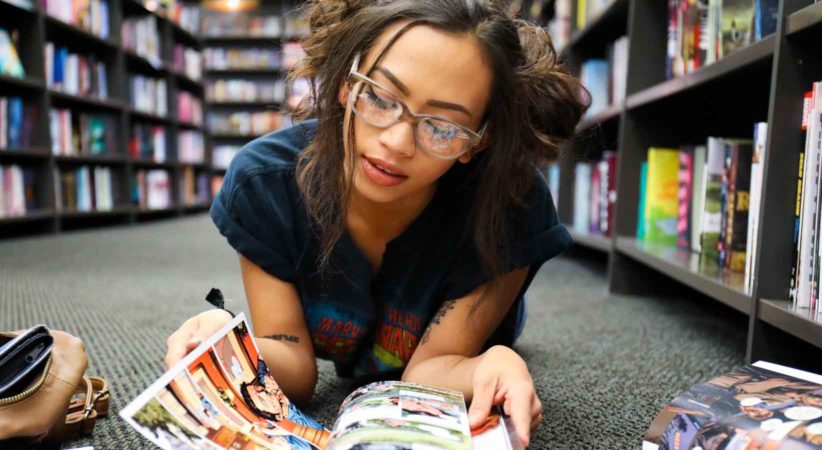
Teaching Literacy with Comic Books
Comic books and graphic novels are excellent tools to help teach visual literacy and critical thinking. Historically maligned, comic books are now recognized as powerful literacy learning tools. As we all know, reading is reading and should be encouraged no matter the format. If a reluctant reader is drawn to graphic novels, there are now so many quality publications that you are sure to find interesting and valuable materials to work with. Reading comic books and graphic novels also uses various types of literacies beyond visual literacy. These include gestural (body language), spatial (panels and layout) and symbolic (speech bubbles, icons, etc.). A reader must look at all the elements on the page and interpret and decode them together to make meaning. Read more about the benefits of literacy learning with graphic novels in Iurgi Urrutia‘s article 21st-century literacy with graphic novels.
Did you know you can borrow graphic novels from the Decoda library? Small group or class sets for some titles are available. We have a modest collection but are continually adding more, so check back often! Have a title to suggest? Email the librarian and she’ll be happy to review it. Here are a selection we can offer your learners:
- 7 generations series
- Clear skies : a family violence story
- Darkness calls
- An invited threat : diabetes prevention comic book
- Lighting up the darkness
- On the turn
- Path of the warrior
- Social smarts : privacy, the Internet, and you
- Telling our stories : immigrant women’s resilience
- Tomorrow’s hope
- The underwater welder
For more help using graphic novels and comic books to teach literacy, check out Worth a thousand words : using graphic novels to teach visual and verbal literacy. For using graphic novels with children, have a look at Using Graphic Novels.
Related Blog Posts
Learning to Drive Resources
Resources are available to help people learning to drive.
Back to Basics: Sequencing
Welcome to our new Back to Basics series! This week we are discussing another reading comprehension strategy: sequencing.
LBS and COVID-19
Looking for some resources as your adult literacy work feels the impact of COVID-19? AlphaPlus has created a new LBS and COVID-19 Google site. It’s designed to share information and …
